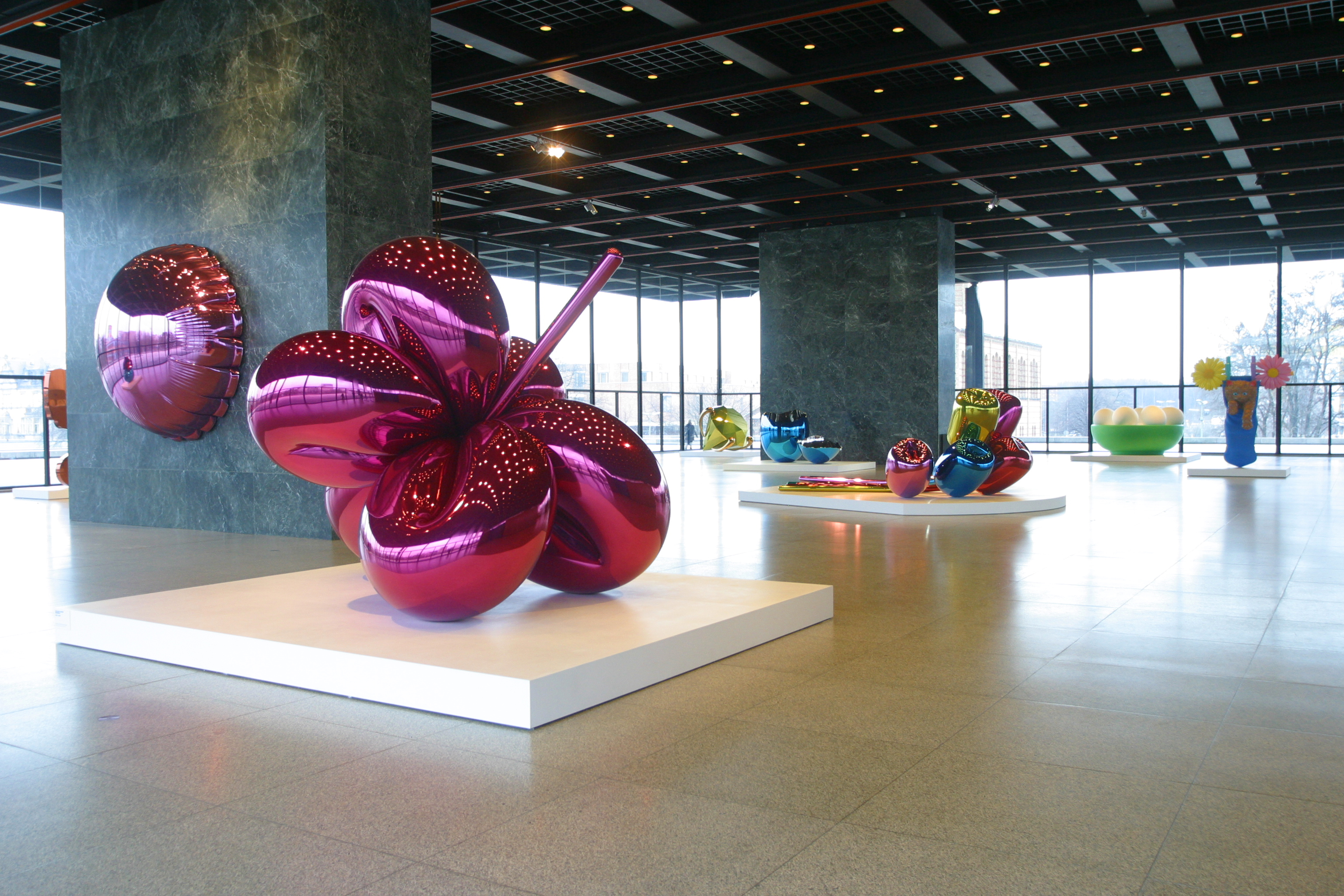Jeff Koons is currently one of the most important and successful artists internationally, and he represents the cult of the artist in the present like hardly any other artist: since the 1980s at the latest, he has been known with groups of works such as Banality (1988) and Made in Heaven (1989- 1993) also became known to a wide audience through the production of himself. Jeff Koons works with the generally understandable drawing material of popular culture - with the shrill, loud and colorful as well as with the playful and kitsch - and at the same time places himself clearly within art historical traditions. Among other things, he refers to two of the most important modern artists - Marcel Duchamp and Andy Warhol - as well as to the formal language and image theory of the Baroque and Rococo.
On the occasion of the large exhibition series on the artist's cult, 11 sculptures from Jeff Koons' Celebration series, on which the artist has been working intermittently since 1994, were on display in the Upper Hall of the Neue Nationalgalerie. This is the first time that this series, which will consist of a total of 16 paintings and 20 sculptures, has been presented on such a large scale. Celebration, 'the celebration', translates the formal language of children's toys, gift items and luxury goods into large-format sculptures and paintings with bright colors. In the monumental sculptures shown here, the artist combines various means that had already been developed in earlier groups of works: The Inflatables from the late 1970s show inflatable children's toys such as figures and flowers on ready-made mirrors in which the colored image of the colorful objects is multiplied; In the 1980s, in the Equilibrium series, he cast objects such as inflatable boats and oxygen masks in bronze, thereby reducing their use value to absurdity. Also in the 1980s, he used stainless, high-gloss steel for the first time in Luxury and Degradation.
